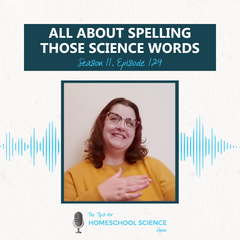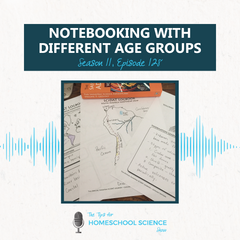FREE Shipping on all our products! (Please Note: Orders may experience a delay of a week or more in shipping due to the high volume of orders at this time of year.)
FREE Shipping on all our products! (Please Note: Orders may experience a delay of a week or more in shipping due to the high volume of orders at this time of year.)
3 reasons I love to use notebooking for science {Episode 14}
October 03, 2016 2 min read
Episode 14 – 3 reasons I love to use notebooking for science
Notebooking is a fantastic way to record what your students are learning in science. This technique has been around for hundreds of years. Men and woman like DaVinci, Beatrix Potter, and Thomas Edison all took advantage of notebooking.
In episode 14 of the Tips for Homeschool Science Show, I am going to share three reasons why I love to use notebooking for science!
Watch the Video
Or listen to the audio
Share the Tips
If you found these homeschool science tips to be helpful, would you please take a moment to rate it on iTunes or Stitcher? This would help me tremendously in getting the word out, so that more ear buds are filled with science-teaching encouragement.
The Highlights
In notebooking, the students are not merely regurgitating facts.
Notebooking has two key components:
- Material Content – The text that students write.
- Visual Content – A picture that coordinates with the topic.
Three reasons I love notebooking:
- Notebooking requires the students to think about what they have learned.
- Notebooking provides freedom for the students.
- Notebooking engages both sides of the students’ brains.
To get started with notebooking, follow these three steps:
- Read up on notebooking.
- Choose what resource you will use.
- Create a notebooking page.
Additional Resources
Listen to these two episodes to learn about writing in science:
- Episode 12 – Writing in Homeschool: The Elementary Years
- Episode 13 – Writing in Homeschool: Middle School & Beyond
Read the following articles to learn more about notebooking:
Also in {Podcast} The Tips for Homeschool Science Show
All About Spelling Those Science Words {Season 11, Episode 129}
March 25, 2024 7 min read

In this episode, we'll be interviewing Robin Williams from All About Spelling. Click "Read More" to listen is as we discuss tips and tricks for spelling all those science words!
How should you handle notebooking through the different ages? {Season 11, Episode 128}
March 18, 2024 3 min read

Writing in Science with a Well-Trained Mind (Interview) {Season 11, Episode 127}
March 11, 2024 16 min read

Click "Read More" to listen in as Susan Wise Bauer and Susanna Jarret join Paige to share tips and tools about the third key to teaching science!
Subscribe
Sign up to get the latest on sales, new releases and more …

